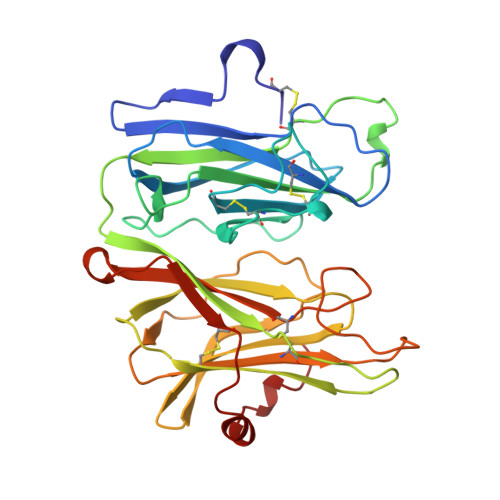Substrate-mediated electron transfer in peptidylglycine alpha-hydroxylating monooxygenase.
Prigge, S.T., Kolhekar, A.S., Eipper, B.A., Mains, R.E., Amzel, L.M.(1999) Nat Struct Biol 6: 976-983
- PubMed: 10504734
- DOI: https://doi.org/10.1038/13351
- Primary Citation of Related Structures:
1OPM, 3PHM - PubMed Abstract:
Peptide amidation is a ubiquitous posttranslational modification of bioactive peptides. Peptidylglycine alpha-hydroxylating monooxygenase (PHM; EC 1.14.17.3), the enzyme that catalyzes the first step of this reaction, is composed of two domains, each of which binds one copper atom. The coppers are held 11 A apart on either side of a solvent-filled interdomain cleft, and the PHM reaction requires electron transfer between these sites. A plausible mechanism for electron transfer might involve interdomain motion to decrease the distance between the copper atoms. Our experiments show that PHM catalytic core (PHMcc) is enzymatically active in the crystal phase, where interdomain motion is not possible. Instead, structures of two states relevant to catalysis indicate that water, substrate and active site residues may provide an electron transfer pathway that exists only during the PHM catalytic cycle.
- Department of Biophysics and Biophysical Chemistry, Johns Hopkins School of Medicine, Baltimore, Maryland 21205, USA.
Organizational Affiliation:




















